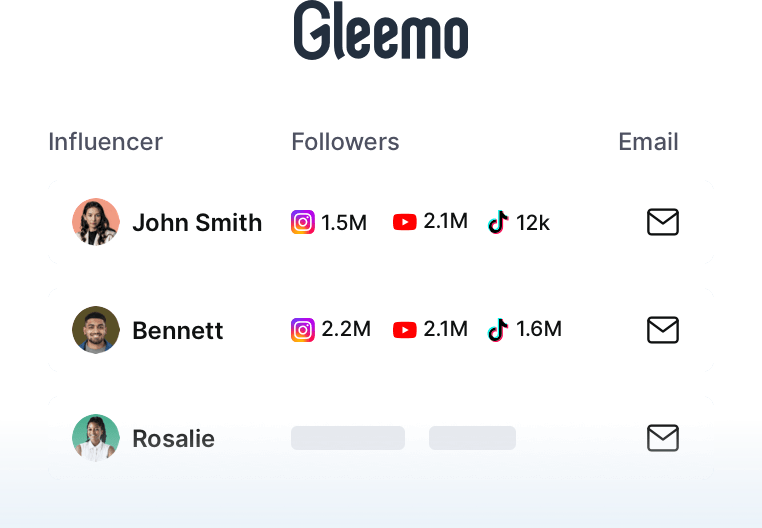In 2025, collaborations with influencers are estimated to generate $24 billion in revenue for brands. Creators are key now. Algorithms focus on real content, so teaming up with them is crucial to stand out in the digital crowd.
In this comprehensive guide we’ll explore 9 collaboration models with case studies, reveal tools for finding authentic creators, and share frameworks for measuring true ROI – including how AI streamlines the process.
Understanding the Strategic Influencer Collaboration

Strategic influencer collaboration is a purposeful partnership between brands and social media influencers aimed at promoting products, services, or brand messages. This approach uses the influencer’s credibility and their engaged audience. It builds real connections, unlike traditional advertising. The collaboration is rooted in shared values and goals, with both parties contributing to the relationship’s success.
The Value of Influencer Collaboration
Influencer collaboration offers numerous benefits that can significantly impact a brand’s success:
- Brand Awareness: Partnering with influencers introduces your brand to new audiences that might not have discovered you otherwise. This is particularly valuable for new or niche brands looking to expand their reach.
- Audience Trust: Influencers have spent time building trust with their followers. By associating your brand with a trusted influencer, you can borrow some of that credibility.
- Increased Sales: Strategic collaborations can directly impact your bottom line. When influencers effectively communicate the value of your product or service to their engaged audience, it can lead to increased conversions and sales.
- Market Insights: Working with influencers can provide valuable insights into market trends, consumer preferences, and audience feedback.
9 Effective Ways to Collaborate with Influencers
There are several ways brands can collaborate with influencers, each offering unique benefits and opportunities:
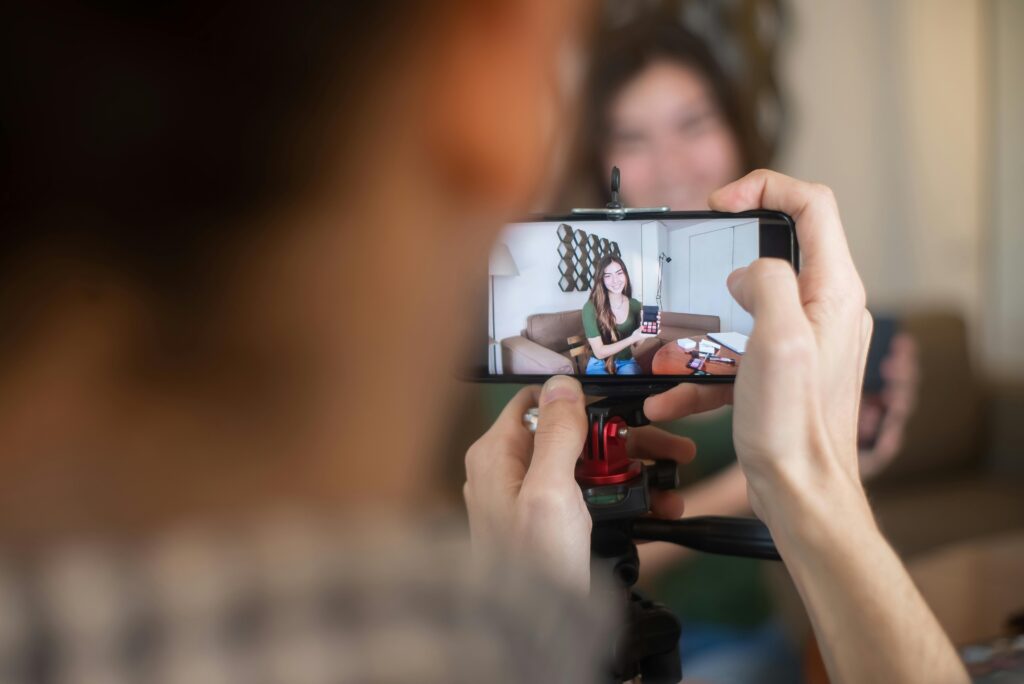
1. Influencer Gifting: Building Initial Connections
Influencer gifting involves sending free products to creators with the hope that they will share their experiences and promote the products to their followers. This strategy is particularly effective for building initial connections with influencers and is often used for new product launches and by brands with smaller budgets.
Example: Touchland, a hand sanitizer brand, gifted their premium sanitizers to celebrities like Naomi Campbell and Kris Jenner. This strategic gifting led to organic sharing and significant social media engagement.
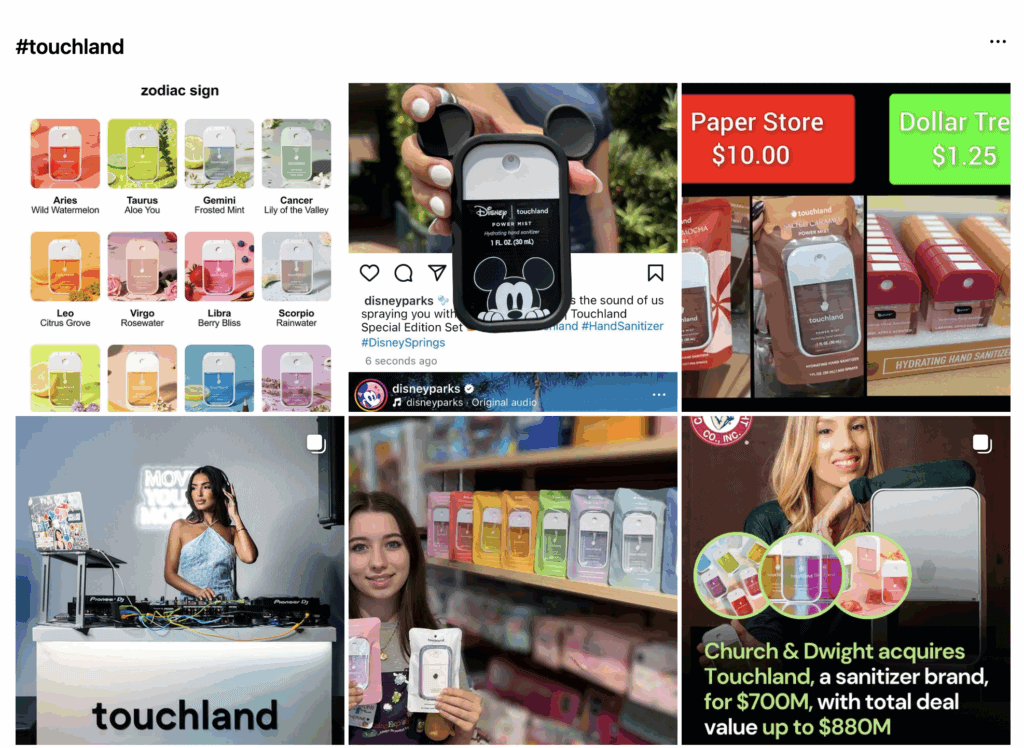
Pros:
- Starts collaborations on a positive note based on giving.
- Cost-effective as the only cost is the cost of goods sold (COGS).
- Helps filter influencers who align with the brand’s voice.
Cons:
- No guarantee that influencers will feature or positively review the product.
- Less control over how the product is presented.
- Potential for wasted resources if not strategic in selecting creators.
2. Giveaways: Boosting Engagement and Conversions
Giveaways involve offering free products or services to participants in exchange for specific actions such as liking, commenting, or tagging friends.
Example: HelloFresh launched a 21-day cooking challenge with micro-influencers, focusing on real people cooking real meals. This initiative generated significant engagement and conversions.

Pros:
- Quickly spikes engagement as audiences rush to enter contests.
- Can prompt new audiences to take actions beneficial to the brand.
- Usually sees higher engagement than other collaboration posts.
Cons:
- Leads might dry up after the giveaway ends.
- Risk of fraud associated with giveaway posts.
- Additional cost of the prize.
3. Sponsored Posts: Paid Partnerships for Visibility
Sponsored posts are promotional content created by influencers in exchange for a fee. These posts are marked as sponsored or paid partnerships to maintain transparency.
Example: Pepsi partnered with celebrities like Devin White and David Beckham to promote their brand. These collaborations significantly improved Pepsi’s branding and reach.
Pros:
- Lower risk of influencers deviating from the script since they are paid.
- Offers various possibilities such as feed spots, Stories, or podcasts.
- Enables brands to ask for specific actions like generous commissions.
Cons:
- Audience may tune out sponsored content or consider it less authentic.
- Can be costly if the wrong influencers are chosen.
- Requires negotiation skills and appropriate technology.
4. Brand Ambassador Programs: Long-Term Advocacy
Brand ambassadors are influencers who have a deep allegiance to a brand and consistently promote its products.
Example: Calvin Klein’s #MyCalvins campaign featured celebrities and influencers like Justin Bieber and Kendall Jenner. This campaign significantly increased brand visibility and engagement.
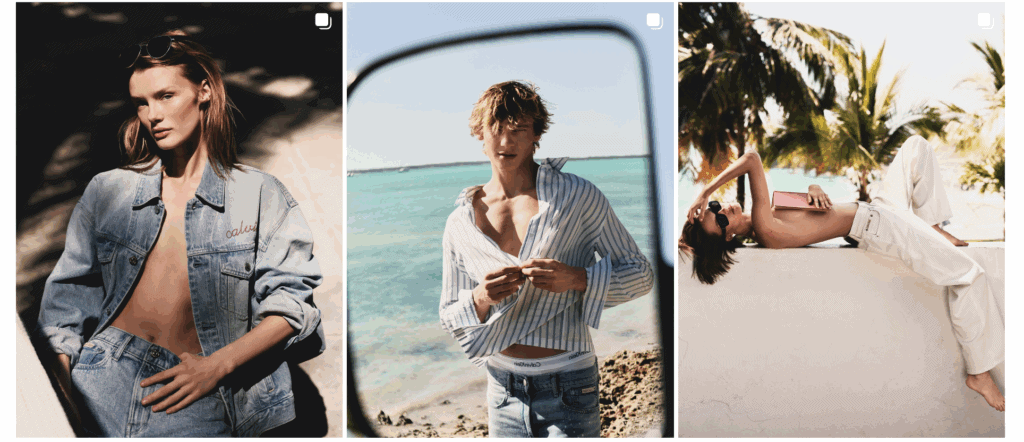
Pros:
- Deeper brand loyalty than standard influencer partnerships.
- More authentic and natural partnership posts.
- Can act as feedback channels, event promoters, and panel moderators.
Cons:
- Requires setting up systems, guidelines, and admin work.
- Brand reputation can be affected if an ambassador’s reputation declines.
5. Content Collaboration: Co-Creating Valuable Content
Content collaboration involves partnering to create content in exchange for promoting the brand.
Example: Salt & Stone partnered with influencer Mada Graviet to share honest opinions about their natural deodorant. This authentic content generated significant engagement and conversions.
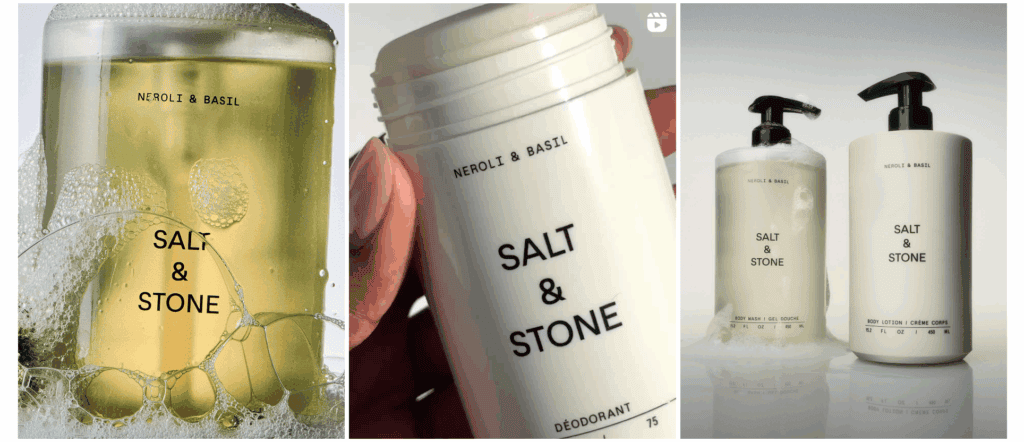
Pros:
- Allows the brand to speak in its own words.
- Direct communication with a new audience.
- Valuable backlinks to the website.
Cons:
- Significant upfront work including outreach and content creation.
- May require multiple pitches to secure a spot.
- Publications may limit the number of promotional links.
6. Account Takeovers: Leveraging Influencers’ Perspectives
Account takeovers allow influencers to post from a brand’s social media account, redirecting their audience to the brand’s page.
Example: Daniel Wellington, a watch brand, successfully utilized influencer marketing by partnering with numerous micro-influencers on Instagram. The brand provided influencers with watches to showcase in visually appealing, lifestyle-oriented posts.
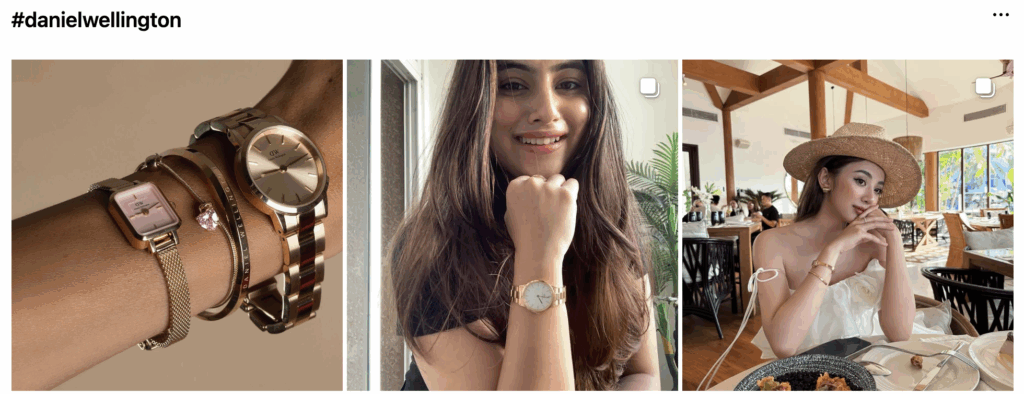
Pros:
- Direct funnel to the influencer’s audience.
- Influencer-generated content on the brand’s social media.
- Brings a fresh perspective to the brand’s content.
Cons:
- Security risks if the brand hasn’t thoroughly vetted the influencer.
- Limited reach compared to other collaboration types.
- Loss of some control over brand interaction.
7. Commercials: Partnering for Classic Ads
Commercials involve partnering with influencers for traditional advertisements.
Example: Rare Beauty, Selena Gomez’s beauty brand, created a series of commercials featuring influencers. These commercials were used across social media and the brand’s website, resulting in a significant increase in product sales.
Pros:
- Backed by a popular influencer, earning audience goodwill.
- Can be used in other forms of traditional advertising.
- Familiar face in advertisements.
Cons:
- Expensive to shoot commercials and pay mega-influencers.
- May come across as less authentic than other collaborations.
8. Product Collaboration: Co-Creating Products
Product collaborations involve co-creating a new product or product line with an influencer.
Example: Gymshark partnered with fitness influencers to create limited-edition workout gear. These collaborations significantly boosted the brand’s recognition and sales.
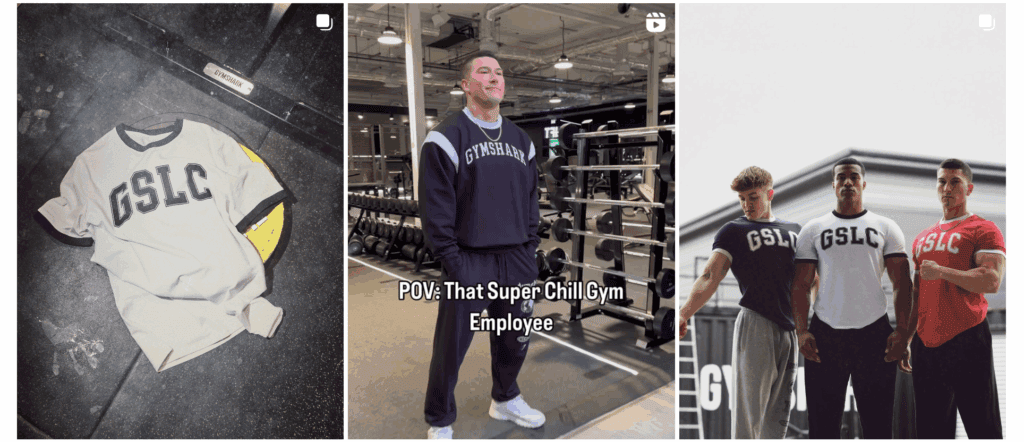
Pros:
- Influencer has more skin in the game, increasing promotion motivation.
- More trust among the influencer’s audience.
- Can level up brand ambassador programs.
Cons:
- Requires significant upfront costs and brand image maintenance.
- Limited to trusted and reliable influencers.
- Complex and time-consuming execution.
9. Hosting Events: Building Brand and Community
Hosting events involves inviting influencers to participate in brand events, which they can promote in advance.
Example: ABSOLUT Vodka hosted a series of events focused on sustainability and LGBTQIA advocacy. These events generated significant buzz and engagement on social media.

Pros:
- Boosts brand awareness and generates hype for the event.
- Can partner with multiple influencers simultaneously.
- Attracts a large number of influencers.
Cons:
- Limited control over what creators post from the event.
- Additional costs for meals and accommodation if local influencers aren’t found.
How to Collaborate with Influencers Effectively
To maximize the success of your influencer collaborations, consider the following strategies:
1. Setting Clear Goals and Objectives for Collaboration

Establishing clear goals is the foundation of any successful influencer collaboration. Goals should be SMART: Specific, Measurable, Achievable, Relevant, and Time-bound.
Common objectives include:
- Brand Awareness: Increasing visibility and recognition within a specific market or demographic.
- Product Launch: Generating buzz and interest around a new offering.
- Traffic Generation: Driving visitors to a website, landing page, or e-commerce store.
- Sales Conversion: Directly impacting the bottom line through promo codes or affiliate links.
- Content Creation: Developing authentic content that resonates with the target audience.
| Objective | Key Metrics | Tools for Measurement |
| Brand Awareness | Impressions, Reach, Social Shares | Google Analytics, Social Media Insights |
| Product Launch | Pre-orders, Waitlist Sign-ups, Social Mentions | Hootsuite, Brand Monitoring Tools |
| Traffic Generation | Click-Through Rate (CTR), Bounce Rate, Conversion Rate | Google Analytics, UTM Parameters |
| Sales Conversion | Revenue Generated, Conversion Rate, Customer Acquisition Cost (CAC) | E-commerce Analytics, Promo Code Tracking |
| Content Creation | Engagement Rate, Shares, Comments, Saves | Native Platform Analytics, Gleemo |
For example, if your goal is to increase brand awareness, you might track metrics like impressions and reach. If driving sales is your priority, conversion rates and revenue generated become the key indicators of success.
2. Identifying Influencers Who Align with Your Brand Vision
Selecting the right influencers is a critical step that requires thorough research and strategic thinking.
Key Criteria for Influencer Selection
- Audience Demographics: Analyze the age, gender, location, and interests of the influencer’s followers to ensure they match your target market. Influencer marketing tools like Gleemo provide detailed demographic data, making it easier to find precise matches.
- Engagement Rates: Look beyond follower counts. High engagement rates (comments, likes, shares) indicate an active and loyal community. Industry benchmarks suggest that engagement rates above 3% are considered strong for most niches.
- Content Style and Quality: Assess the visual appeal, consistency, and creativity of the influencer’s content. Ensure their style aligns with your brand’s aesthetic and messaging.
- Authenticity and Trustworthiness: Evaluate the influencer’s reputation and the authenticity of their interactions with followers. You can use a fake follower check tool to avoid those with a history of controversial content or inauthentic behavior.
- Niche Relevance: Prioritize influencers within your specific industry or niche for higher relevance and engagement potential.
Micro vs. Macro Influencers
| Category | Follower Count | Engagement Rates | Cost | Ideal For |
| Micro-Influencers | 10k-100k | Typically Higher (3-8%) | Lower | Niche Markets, Detailed Product Demos |
| Macro-Influencers | 1M+ | Generally Lower (1-3%) | Higher | Broad Awareness Campaigns, Celebrity Endorsements |
Micro-influencers often offer more authentic connections and higher engagement within specific communities. Macro-influencers provide extensive reach but may lack the same level of audience intimacy. A balanced approach, combining both types, can maximize campaign impact across different objectives.
3. Crafting Tailored Campaigns to Suit Specific Influencers
A tailored approach to campaign creation is essential for maximizing the effectiveness of influencer collaborations. Here are the key steps to developing Tailored Campaigns:
Establish Multiple Channels:
- Use a combination of email, direct messaging, and collaboration platforms (e.g., Slack, Asana) to ensure accessibility.
- Assign a primary point of contact from your team to manage the relationship.
Set Clear Expectations:
- Outline deliverables, timelines, compensation, and content guidelines in a written contract.
- Include specific metrics for success and reporting requirements.
Regular Check-Ins:
- Schedule weekly or bi-weekly syncs to review progress, address concerns, and make adjustments.
- Use these meetings to celebrate milestones and reinforce positive feedback.
Transparent Feedback:
- Provide constructive feedback in a respectful manner.
- Encourage influencers to share their perspectives and suggestions.
Document Everything:
- Keep detailed records of agreements, revisions, and communications.
- Use project management tools to track tasks and deadlines.
4. Measuring Performance and Refining Strategies for Better Results
Tracking the performance of your influencer campaigns is crucial for understanding their effectiveness and making data-driven decisions. Here’s how to approach it:
Key Performance Metrics
| Performance Metric | Description | How to Measure |
| Engagement Rate | The level of interaction (likes, comments, shares) relative to the audience size. | Calculated by dividing the total interactions by the reach or follower count and multiplying by 100. |
| Reach | The total number of unique users who have seen the content. | Measured using platform analytics or third-party tools. |
| Conversions | The number of desired actions taken by the audience (e.g., purchases, sign-ups). | Tracked through unique links, promo codes, or platform conversion pixels. |
| Return on Investment (ROI) | The financial return compared to the cost of the campaign. | Calculated by subtracting the campaign cost from the revenue generated and dividing by the campaign cost. |
| Follower Growth | The increase in the brand’s or influencer’s followers during the campaign period. | Measured by comparing follower counts before and after the campaign. |
| Sentiment Analysis | The overall sentiment of the audience’s comments and feedback. | Analyzed manually or using natural language processing tools. |
Steps to Measure Performance
- Set Clear KPIs: Define the key performance indicators (KPIs) that align with your campaign goals. For example, if your goal is to increase sales, focus on conversions and ROI.
- Use Analytics Tools: Utilize platform-native analytics (e.g., Instagram Insights, YouTube Analytics) and third-party tools (e.g., Google Analytics, Hootsuite) to gather data on campaign performance.
- Track Unique Links and Codes: Provide influencers with unique referral links or promo codes to accurately measure the traffic and conversions generated from their content.
- Monitor Sentiment: Keep an eye on the comments and feedback from the audience to gauge their sentiment and identify any potential issues.
- Compare to Benchmarks: Compare the performance metrics against industry benchmarks or your brand’s historical data to evaluate the relative success of the campaign.
- Document Findings: Keep a detailed record of the campaign’s performance, including what worked well and what didn’t. This documentation serves as a valuable reference for future campaigns.
5. Building Long-Term Relationships for Sustained Success
While short-term influencer partnerships can yield quick wins, long-term relationships offer a foundation for sustained growth and deeper audience connections. These enduring partnerships allow for more nuanced brand integration and can evolve with market trends and consumer preferences.
Benefits of Long-Term Influencer Relationships
- Enhanced Authenticity: Prolonged collaborations enable more organic and believable content as influencers become familiar with the brand.
- Cost Efficiency: Extended partnerships may lead to more favorable contract terms over time.
- Consistent Messaging: Maintaining a stable group of influencers helps reinforce brand identity consistently across campaigns.
- Exclusive Content Opportunities: Long-term partners may be more willing to participate in unique ventures like product co-creation or limited editions.
- Data-Rich Insights: Ongoing collaborations provide richer data sets for analyzing audience behavior and preferences.
Strategies for Cultivating Long-Term Partnerships
- Mutual Value Creation: Ensure the partnership benefits both parties, whether through financial compensation, exclusive access, or creative freedom.
- Exclusive Incentives: Offer early access to products, special events, or unique experiences not available to other influencers.
- Transparent Communication: Maintain open lines of communication and regularly solicit feedback.
- Creative Autonomy: Trust influencers to create content that aligns with their style while still meeting brand guidelines.
- Performance Recognition: Acknowledge and reward top-performing influencers with bonuses or upgraded partnership tiers.
Gleemo Enhance Your Influencer Collaborations
Strategic influencer collaboration presents a valuable opportunity for brands to connect with audiences, build trust, and drive business growth.
By understanding the different ways of collaborations, setting clear goals, selecting the right influencers, crafting tailored campaigns, and measuring performance, brands can effectively leverage this powerful marketing strategy.
Building long-term relationships with influencers can further enhance these efforts, leading to sustained success and meaningful connections with consumers.

If you’re looking to streamline and maximize your influencer collaborations, consider using a comprehensive platform like Gleemo.
Gleemo offers robust tools for discovering, analyzing, and managing influencer relationships, helping you efficiently find the right influencers, automate your workflow, and track campaign performance!
FAQs
What is influencer collaboration?
Influencer collaboration is a strategic partnership between a brand and a social media influencer to promote products, services, or brand messages. It leverages the influencer’s reach, credibility, and audience engagement to achieve marketing objectives.
How do I start a collaboration with an influencer?
To start a collaboration, begin by identifying influencers whose audience aligns with your brand. Engage with their content, then reach out with a personalized proposal outlining the collaboration details, mutual benefits, and compensation. Follow up politely if necessary.
Why is influencer collaboration important?
Influencer collaboration is important because it allows brands to reach new audiences through trusted voices. It builds audience trust, increases brand awareness, and can drive sales. It also provides valuable market insights and helps brands stay connected with current trends and consumer preferences.
How can I measure the success of an influencer collaboration?
Success can be measured through various metrics such as engagement rates, reach, website traffic, conversion rates, and return on investment. Tracking these metrics helps assess the campaign’s effectiveness and informs future strategy adjustments.
